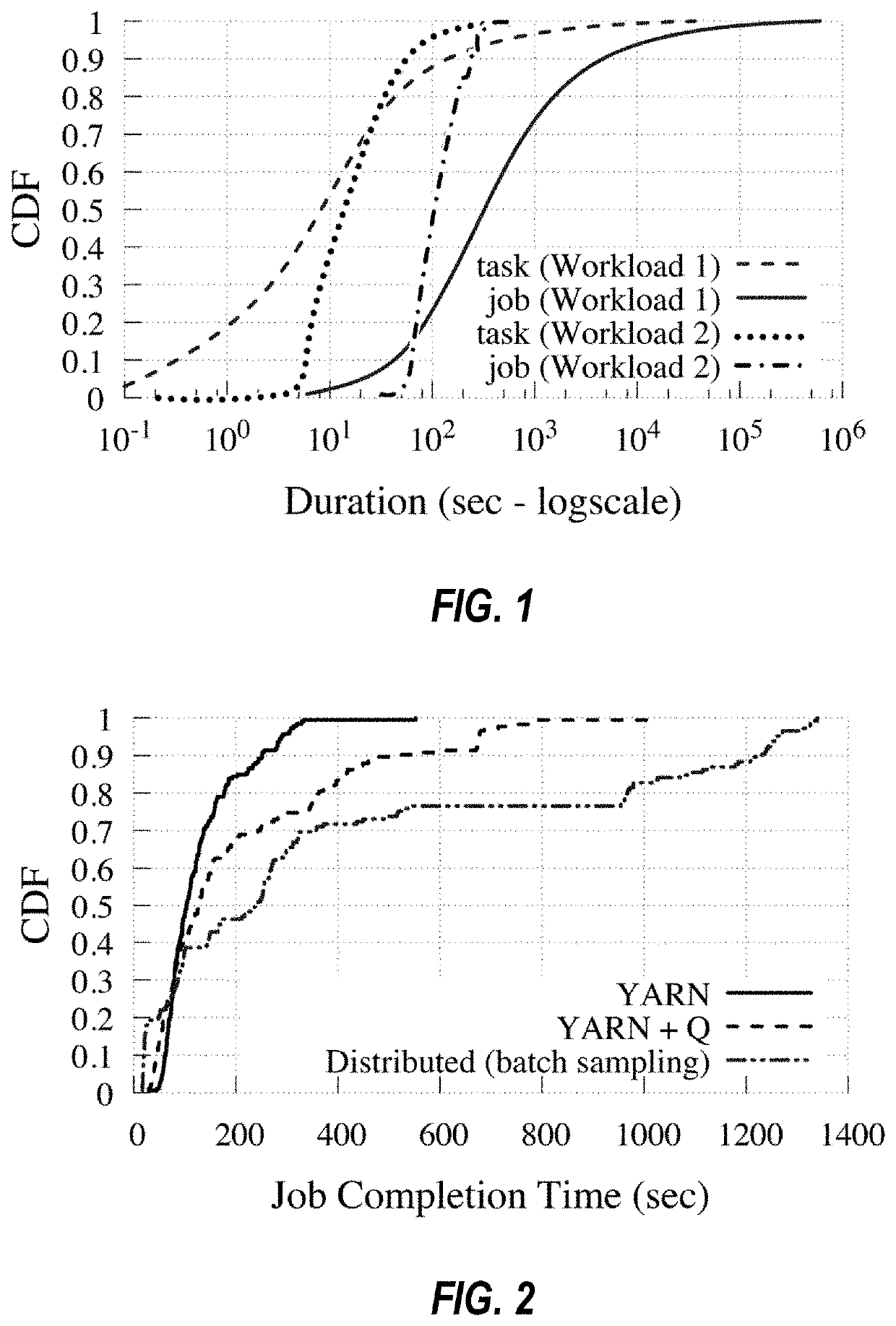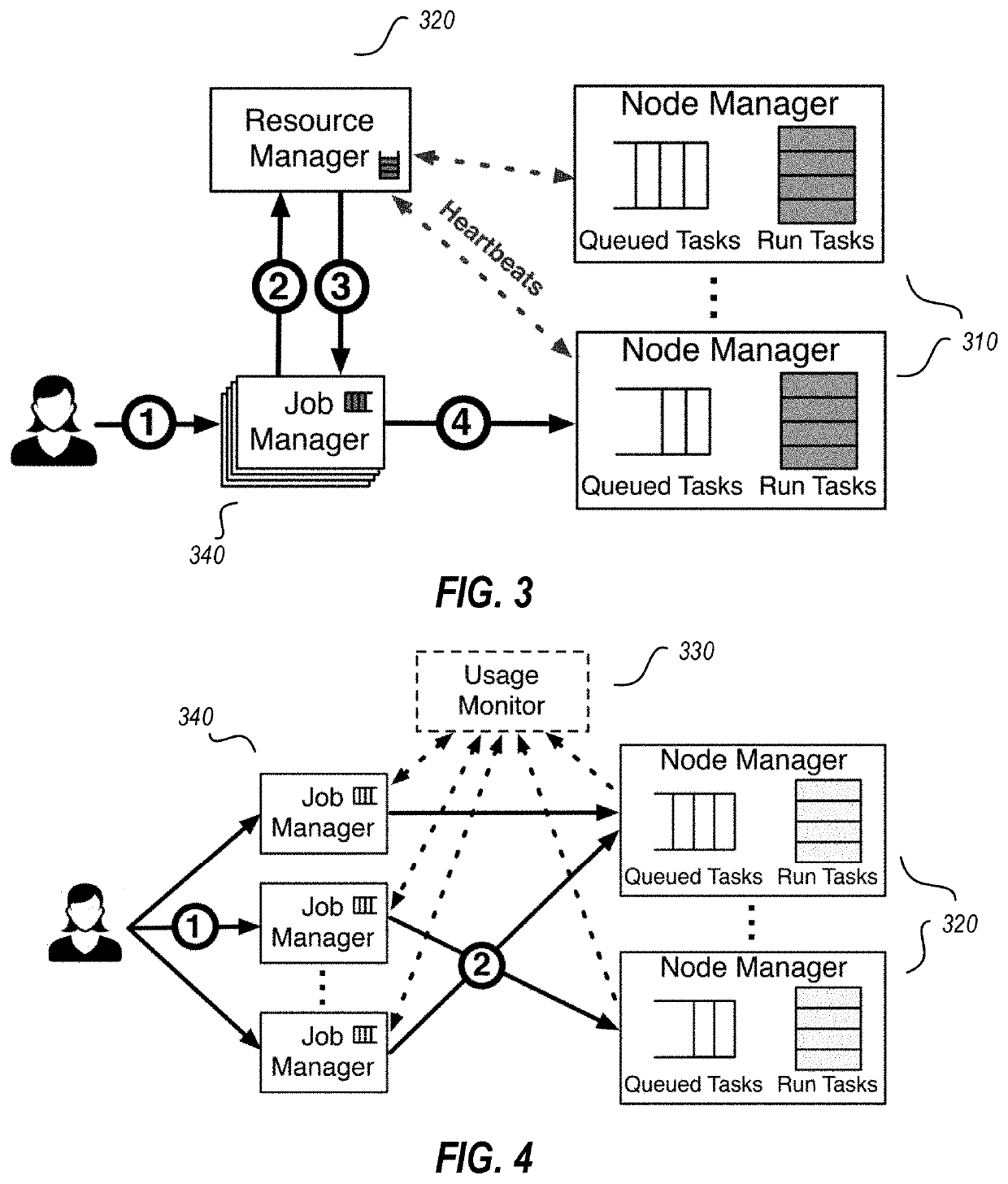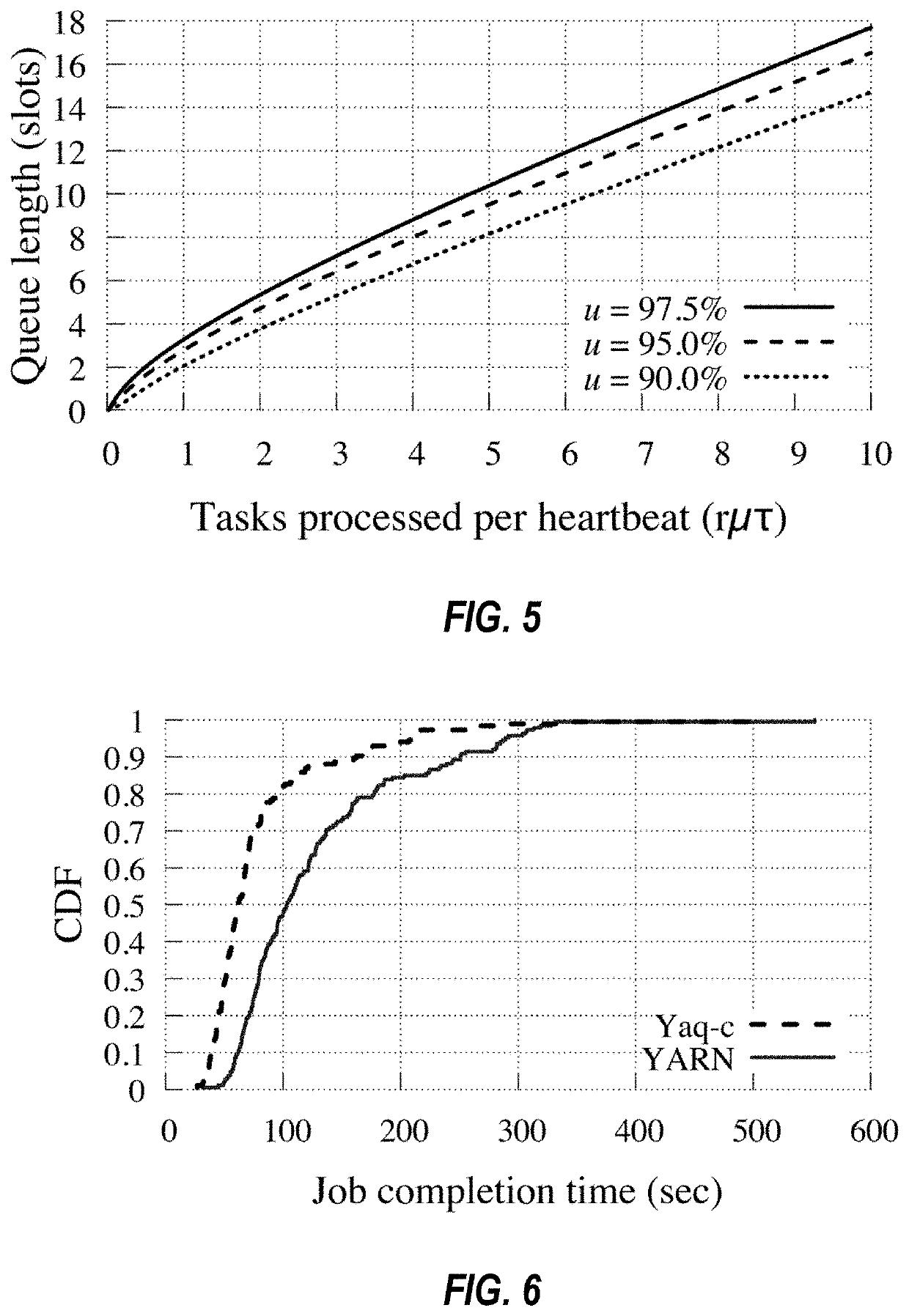Efficient queue management for cluster scheduling
a cluster scheduling and queue management technology, applied in the direction of instruments, multi-programming arrangements, program control, etc., can solve the problems of low cluster utilization and increase queuing delays, and achieve the effect of improving cluster resource utilization and improving job completion times
- Summary
- Abstract
- Description
- Claims
- Application Information
AI Technical Summary
Benefits of technology
Problems solved by technology
Method used
Image
Examples
Embodiment Construction
1. Introduction
[0037]Herein are provided methods, systems, and computer program products for managing task queues for tasks which are to be executed in a distributed computing environment. For example, a computer-implemented method may include receiving a job at a cluster for execution. The job may comprise one or more tasks. As may be appreciated, a job may and often does comprise a great many tasks. The method may include determining one or more queue sizes for one or more queues into which tasks are to be placed for execution in the distributed computing environment. A node of a plurality of nodes in the distributed computing environment (e.g., cluster) on which a task is to run may be determined. The task may be placed into a queue such that the task will be run on the determined node. A priority for the task relative to other tasks in the queue may also be determined. Based on the priority of the task, an order of execution for all tasks in the queue may also be determined. The...
PUM
 Login to View More
Login to View More Abstract
Description
Claims
Application Information
 Login to View More
Login to View More - R&D
- Intellectual Property
- Life Sciences
- Materials
- Tech Scout
- Unparalleled Data Quality
- Higher Quality Content
- 60% Fewer Hallucinations
Browse by: Latest US Patents, China's latest patents, Technical Efficacy Thesaurus, Application Domain, Technology Topic, Popular Technical Reports.
© 2025 PatSnap. All rights reserved.Legal|Privacy policy|Modern Slavery Act Transparency Statement|Sitemap|About US| Contact US: help@patsnap.com



